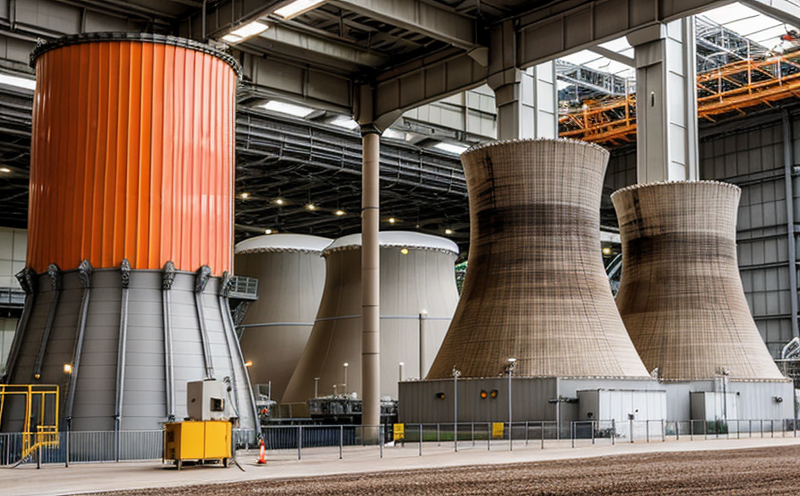ASTM E1921 Master Curve Fracture Toughness of Reactor Steels
The ASTM E1921 standard provides a method for determining the fracture toughness of reactor steels, which is crucial for ensuring structural integrity in nuclear power plant components. This testing methodology focuses on understanding how materials behave under stress conditions that could lead to cracking or failure.
Fracture toughness (KIC) is an important material property, especially when dealing with critical structures like reactor pressure vessels and piping systems. The master curve approach used in ASTM E1921 allows for the evaluation of a wide range of temperatures by combining data from different temperature tests into a single curve. This comprehensive method helps predict how materials will perform under varying thermal conditions.
The test involves subjecting specimens to controlled stress rates while measuring crack growth behavior using goniometric devices or other suitable techniques. Specimens are typically taken from reactor components and heat treated according to the specific requirements of ASTM E1921. The process ensures that any potential flaws or weaknesses within the material can be identified early on.
Understanding KIC values for different temperature ranges is essential for nuclear safety and regulatory compliance. Regulatory bodies like the US Nuclear Regulatory Commission (NRC) require detailed fracture toughness assessments to ensure reactor components are safe under all expected operating conditions, including those involving rapid changes in temperature or stress.
The ASTM E1921 methodology is widely recognized by both industry professionals and regulatory agencies worldwide. Its standardized procedures provide consistency across laboratories performing similar tests on various materials used in nuclear power generation.
By employing this test method, organizations can enhance their ability to maintain high standards of quality control within the nuclear sector. This ultimately contributes towards improving overall safety measures while also ensuring compliance with international standards such as ASTM E1921 itself.
Why Choose This Test
- Affords comprehensive evaluation of fracture toughness across various temperature ranges.
- Provides valuable insights into material behavior under stress conditions that could lead to failure.
- Ensures adherence to international standards recognized by regulatory bodies and industry experts.
- Supports nuclear safety through detailed assessment of reactor component materials.
- Facilitates compliance with stringent quality control requirements mandated by governing authorities like the US NRC.
International Acceptance and Recognition
The ASTM E1921 Master Curve Fracture Toughness test is recognized globally for its rigorous approach to assessing reactor steels. Regulatory bodies around the world, including the International Atomic Energy Agency (IAEA), recommend this method due to its proven effectiveness in identifying potential weaknesses within critical components.
Many countries have adopted ASTM E1921 as part of their national standards or guidelines for nuclear power plant construction and operation. This widespread acceptance underscores the importance placed on accurate and reliable fracture toughness data when it comes to maintaining safety levels at nuclear facilities.
Incorporating ASTM E1921 into your quality assurance program demonstrates commitment to excellence in materials selection and testing practices. It also facilitates smoother interactions with international partners involved in collaborative projects related to nuclear technology development.
Environmental and Sustainability Contributions
The ASTM E1921 Master Curve Fracture Toughness test plays a significant role in promoting environmental sustainability within the nuclear power sector. By ensuring that reactor components are robust enough to withstand harsh conditions, this testing method helps prevent premature failures which could lead to leaks or other hazards.
Through its contribution to enhanced safety measures and regulatory compliance, ASTM E1921 supports efforts aimed at minimizing risks associated with nuclear operations. This aligns well with broader goals related to reducing carbon footprints through efficient energy production methods while maintaining stringent environmental protection standards.
Incorporating such testing procedures into your quality assurance processes not only enhances safety but also contributes positively towards sustainable practices by supporting long-term reliability and performance of nuclear infrastructure.





